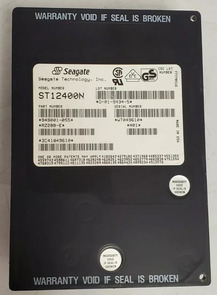First post, by Grzyb
- Rank
- Oldbie
Once upon a time I've run into this video - https://www.youtube.com/watch?v=3cCznB4KkMY
...in which a VLB NIC turns out to be considerably slower than an ISA one.
But the comparision isn't perfect: the ISA NIC was tested in pure DOS, while the VLB one - in Windows.
Also, the data was downloaded onto a disk - actually, a CF card, very fast by VLB-era standards - but I'm still not convinced...
My preferred procedure when benchmarking the network is to completely avoid any disk I/O - so I'm either downloading to RAM-drive, or to a "/dev/null" kind of device.
Recently I aquired a VLB Ethernet card, based on the same chipset as the one in that video, so let me run benchmarks my way...
Client machine:
CPU: Intel 486DX2-S, 66 MHz
board: Socket 3, 256 KB cache, ISA+VLB
RAM: 16 MB
NIC: D-Link DE-510CAT, based on Am79C965 a.k.a. PCnet-32
OS: MS-DOS 6.20
driver: DEPCNPD.COM 1.10
FTP: mTCP 2020-03-07
Server machine is a modern PC, running Linux.
The procedure is to download a 100 MB file in BINARY mode, using "get test100m.bin nul" command, three times.
BNC port results [KB/s]:
991
989
991
RJ45 port results [KB/s]:
992
993
992
Conclusion:
This card isn't bad at all - it pretty much hits the theoretical limit of 10 Mbps Half Duplex Ethernet.
And its only weakness seems to be the "Half Duplex" part - there's no Full Duplex support.
On the other hand, this card isn't any better than ISA cards, either - any decent 16-bit ISA NIC hits the 10 Mbps limit as well.
And some ISA cards - like the ubiquitous 3C509B - do support Full Duplex, so they can approach the limit somewhat closer.
And there are 100 Mbps cards for ISA, but not for VLB...
Nie tylko, jak widzicie, w tym trudność, że nie zdołacie wejść na moją górę, lecz i w tym, że ja do was cały zejść nie mogę, gdyż schodząc, gubię po drodze to, co miałem donieść.
